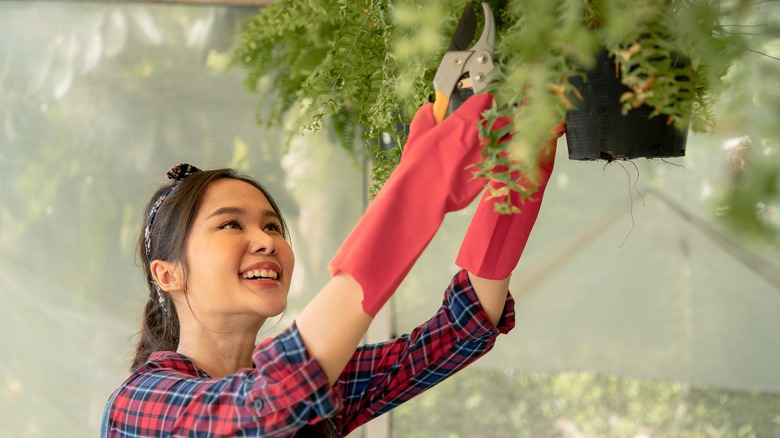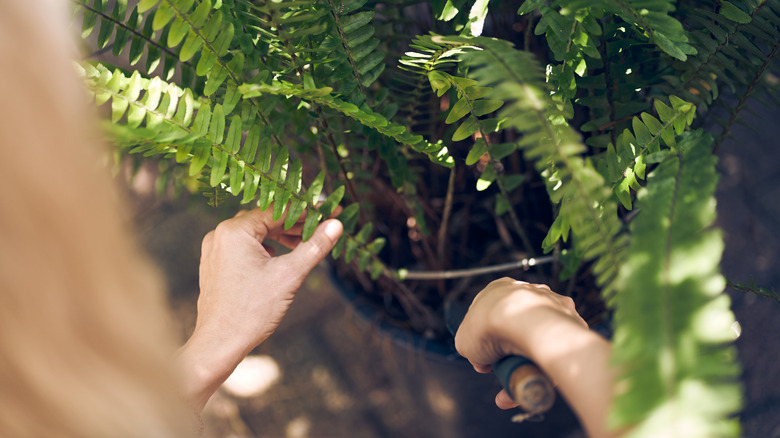The Gardening Technique For Thinning Out Overgrown Ferns Without Killing Them
We may receive a commission on purchases made from links.
With their lush, feathery leaves (fronds) and ability to thrive in shaded corners, ferns add a touch of wild beauty to any garden. But as lovely as they are, ferns have a tendency to overgrow, quickly turning from a neat, decorative plant into a chaotic jungle. When this happens, it's time to thin them out. But how can you do this without harming them? With a few simple steps and some patience, you can thin out overgrown ferns and keep them thriving.
There are many different varieties of ferns, all of which benefit from periodic thinning. When left unchecked, they can become overcrowded, leading to poor air circulation and competition for nutrients. This often results in browning leaves, weak growth, and an overall less attractive appearance. Whether you're working with an evergreen or deciduous fern, the ideal time to prune is in the fall or early spring, as this helps stimulate fresh growth.
The first step in thinning ferns is identifying which fronds should stay and which ones should go. It's a good idea to start by removing any damaged, yellow, or brown fronds. These no longer benefit the plant and can be safely trimmed off at the base. Next, you'll want to remove any overcrowded fronds. Look for spots where multiple fronds are clumped together, causing some to grow poorly or at awkward angles. Using sharp, clean pruning shears is essential to avoid damaging the plant. Cut at the base, close to the soil, and try to keep your cuts clean and precise to minimize shock to the fern.
How to keep your thinned ferns happy
In addition to removing dead fronds, you can also trim down any overgrowth in order to aesthetically shape your fern. Just trim right above where the frond meets the stalk. Once you've successfully thinned out your ferns, it's time to give them a little extra care to ensure they bounce back strong. First, determine how much water your fern needs. Ferns thrive in moist environments, so after a good pruning, they'll appreciate a deep watering. The best method for watering ferns includes making sure the soil stays consistently damp but not waterlogged.
If your fern looks a bit bare after lightening its frond load, don't worry. Ferns are very resilient and will quickly produce new growth as long as they have the right conditions to do so. To encourage this, give them a boost with a diluted liquid fertilizer or Jobe's Plant Food Fertilizer Spikes. However, it's important to go easy on the fertilizer since ferns aren't heavy feeders, and too much can cause more harm than good.
Lastly, keep an eye on the light conditions. Ferns prefer indirect light and can suffer if exposed to too much direct sunlight post-thinning. If they're indoors, consider moving them slightly away from windows or placing them in a spot with filtered light. By thinning your ferns thoughtfully and caring for them afterward, you'll have a healthy, lush plant that remains the star of your garden or home.

